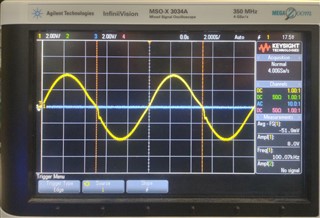Other Parts Discussed in Thread: OPA548, LM1875
Playing with the output snubber, I was able to remove most of the distortion in this circuit with loads below 100 Ohms (no distortion is visible with larger loads).
I removed the current sense amplifier and the output protection diode to ensure that they were not contributing. The present lowest distortion 'sweet spot' for this example is 10 Ohms (R124) and 4.7nF (C46). The originally recommended 1 Ohm 0.22uF snubber performs worse than no snubber at all. The feedback network doesn't affect these distortions. The resistive load was created with a scope 50 Ohm input termination and with a decade resistance box with the same result. Removing the scope connection (but retaining the resistive load) does not change the waveform (as viewed with a separate 10:1 probe).



The source signal shows no such distortion (at R89). Any capacitance placed at C42 only adds ringing at the disconinuity.
I have several examples of this board with no such distortion, so it seems to be related to open loop gain variation between samples of the LM675 (which I would expect to be greater than 20dB, per the datasheet).
The power supply rails at the IC are perfectly quiet at the crossover distortion ponts (in time).
This is a part we were forced to use because the preferred OPA548 was unavailable.
Thank you, in advance, for your help!


























